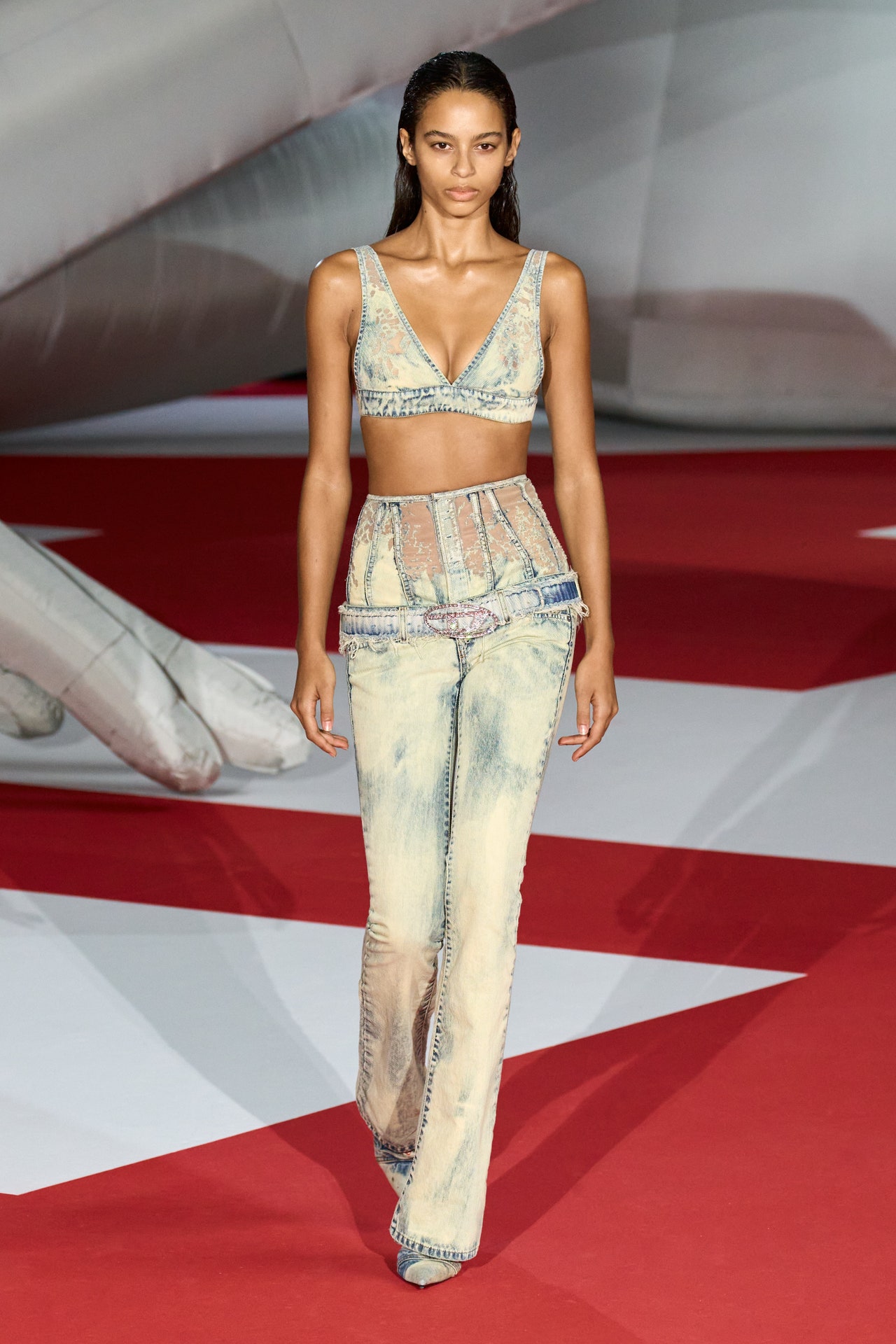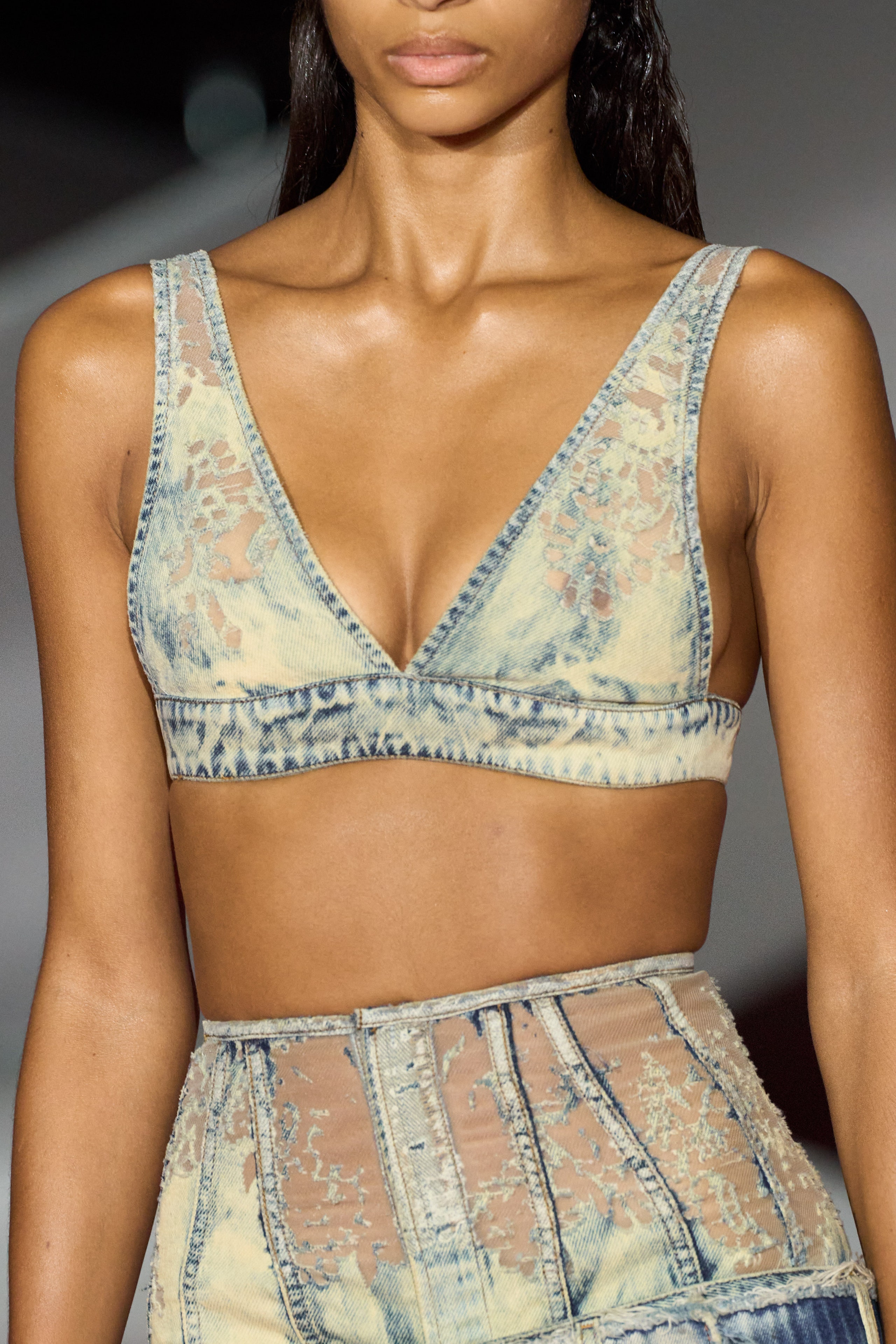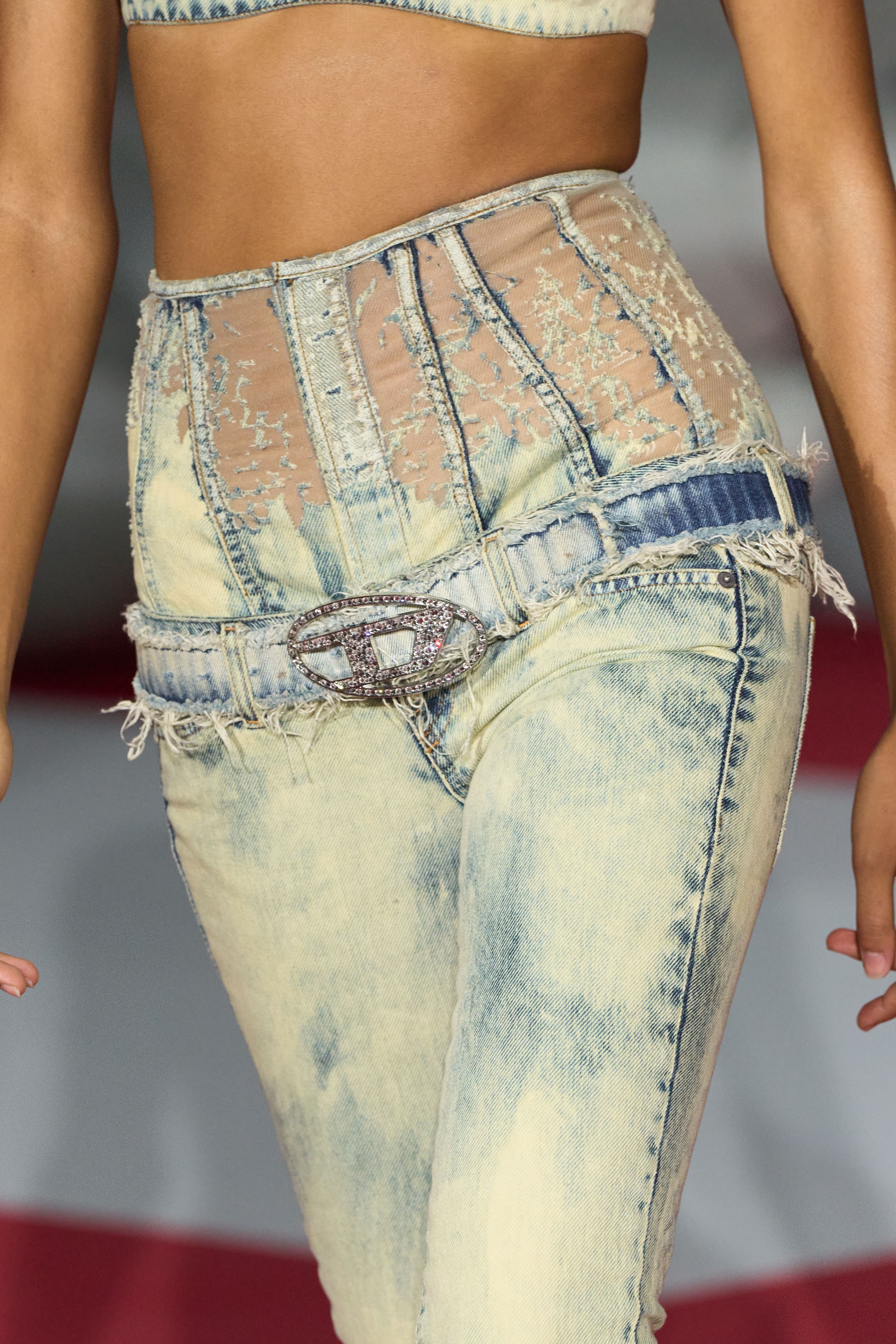Diesel’s Glenn Martens claimed pre-show that the four inflatable human figures that straddled both each other and the middle of the monumental runway had been certified by Guinness World Records as the largest ever recorded. That wasn’t all that was notable about them: It was difficult to get an overview, but from my angle they appeared erotically intertwined. That Martens’s invitation came for the second season in a row accompanied by a sex toy—this time a handsome glass butt plug—further stimulated suspicion that this was their position.
For each guest there was also a free “commemorative” NFT: Web3 is so hot right now. Fashion takes a village, so Martens invited half the city. About 3,000 people had bagged their free tickets online, while a further 1,600 were reserved for students. Most of the 200-ish remaining were there to work or influence. The exceptions were Gucci’s Marco Bizzarri and Moncler’s Remo Ruffini, who were there to support Renzo Rosso and Martens. Other guests included Lil Dre, Julia Fox, Bianca Balti, Skepta, Lolo Zouaï, Mahmood, and Normani.
Under Rosso (in a different manner to the blow-up figures), Martens has been charged with revitalizing and democratizing Diesel. Fittingly enough, this is partially driven by Rosso’s ambition to take his company public. Whatever the motivation, this morning’s stadium show—70 percent of whose attendees were under age 26—was powerful evidence of Diesel’s new audience. All of the publicly available tickets were snapped up within 90 minutes of being released.
Martens said the collection was divided into four chapters: denim, utilitywear, “pop,” and “extravaganza.” He added: “This is my recipe for Diesel; the four ingredients that I insist upon. Because this is only my second show here, and I think we need to keep showing it.” He said one overlying characteristic of the collection was distress: “All of the pieces are ‘imperfect’ through treatment and design. This is something I like, but it also goes back to that democratic instinct. We know Diesel is a brand for anyone who wants to relate, whoever they are, however they feel; everyone is individual and no two people are the same. Plus the piece is supposed to look ‘broken’ so that you can live with it forever—it is unbreakable.”
Diesel’s denim expertise was on full display today. It came layered in tulle, interwoven with lace and organza, or spliced into corsetry. The washes and treatments were manifold: Encrusted with croc-print overlays, reverse-sun-faded, garment-dyed into multiple colors. There was denim jersey and knit denim and flocked denim and fringed denim. And then there was the odd piece of bread-and-butter denim, including a pair of straight-leg jeans and a pair of shorts, both featuring the retro-future Diesel D logo as a cheeky window just above the fly.
Utilitywear included a two-tone olive bomber-and-pants menswear look and a long washed cargo dress, plus a series of nomadically postindustrial ragtag jersey ensembles—streetwear for the postapocalypse.
Pop delivered acid-toned racer-back or spaghetti-strap minidresses sometimes garlanded with florals and contrast-colored lace. A zippered trench dress in a shinily finished tangerine material worked nicely against a same-shade but frayed menswear look in denim. There was a hilarious black leather moto ensemble that seemed like it had previously been made to fit two wearers at once—back to those conjoined figures—before the second wearer had cut himself free to escape. Martens’s Velcro-fastened strap miniskirt returned in silver, as risky as before.
A frayed logo jersey tank top and boob tube—both logo-printed and worn over some trompe l’oeil double-bonded denim pieces in black—signaled the extravaganza. This included two exploded bouclé coats made from torn and tufted Diesel-print fabric and a final, triumphantly tattered house-logo-print skirt south of a trucker. Thousands of phones were held aloft at the finale as Martens’s models retreaded their route through the flailing limbs above them.

























